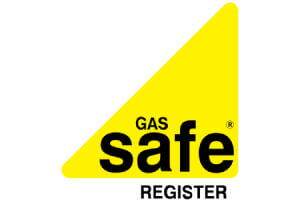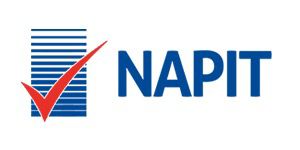
Did you know that fire risk assessments in the UK are not a one-time event, but rather an ongoing process?

As someone deeply involved in this field, I’ve found that there’s often confusion about how frequently these assessments should be revisited. Legislation dictates a ‘regular’ review, but what does ‘regular’ actually mean?
The interval can vary greatly depending on a multitude of factors. To ensure safety and comply with UK regulations, it’s crucial we explore this subject in greater depth.
Stick around as we unpack the specifics of fire risk assessment review frequency.
Understanding Fire Risk Assessments
To fully grasp the importance of fire risk assessments, it’s crucial to understand what they entail and why they’re legally mandated in the UK. These assessments are a systematic evaluation of the potential fire hazards within a premises, designed to identify risks and propose measures for risk mitigation. Assessment effectiveness is critical, as it directly impacts the safety of occupants and the integrity of the property.
Fire risk assessments play a vital role in compliance monitoring. They ensure adherence to the Regulatory Reform (Fire Safety) Order 2005, which requires such assessments for all non-domestic premises and communal areas in residential buildings. Non-compliance can lead to severe penalties, highlighting the significance of these assessments.
The primary goal of these evaluations is safety improvements. By identifying and addressing potential fire hazards, they enhance overall fire safety protocols. These assessments also contribute to emergency preparedness by informing the formulation of fire safety policies, procedures, and evacuation plans.
In essence, fire risk assessments are indispensable tools for ensuring safety, compliance, and risk reduction. Their importance can’t be overstated, and understanding their purpose and process is fundamental for mastery in fire safety.
Frequency of Fire Risk Assessment Reviews
Understanding the frequency of fire risk assessment reviews is pivotal in maintaining a safe and compliant environment. Review scheduling is a critical aspect of fire risk management, and adhering to recommended risk assessment intervals ensures that potential fire hazards are promptly identified and addressed.
The assessment frequency criteria vary depending on the nature and size of the premises, the activities carried out, and the number of occupants. Generally, it’s advisable to conduct a fire risk assessment annually, although this can vary. For instance, in high-risk environments, more frequent assessments may be necessary.
The evaluation frequency standards in the UK suggest a review whenever there are significant changes in the premises or if there’s a fire incident. This is to ensure that the assessment remains current and accurately reflects the potential fire hazards present.
In line with the review frequency guidelines, it’s crucial to remember that an outdated assessment can compromise safety and compliance. Therefore, a proactive approach to fire risk assessment reviews isn’t only a smart safety strategy but also a legal obligation that should never be overlooked.
Legal Requirements for Fire Risk Assessments
In the realm of fire safety, meeting the legal requirements for fire risk assessments is a critical responsibility for businesses and property owners in the UK. It’s not just about ticking boxes – it’s about safeguarding lives and assets against the devastating effects of fire.
Meeting the compliance standards set out by UK safety regulations is key. These dictate both the quality and the assessment frequency of fire risk assessments. Regular, thorough assessments are necessary to ensure that risks aren’t only identified but are also promptly addressed. This isn’t a one-time task – it’s an ongoing commitment, with assessments required to be reviewed and updated regularly to reflect any changes in the premises or activities.
Non-compliance with legal obligations can result in hefty fines, legal consequences, and, in the worst-case scenario, severe fire incidents. Therefore, it’s crucial that risk identification and assessments are conducted by competent professionals who can properly interpret and apply the regulations.
Benefits of Regular Fire Risk Assessment Reviews

Regularly reviewing and updating fire risk assessments offers a myriad of benefits, from early detection of potential hazards to ensuring that safety measures are effective and up-to-date. One of the chief advantages is undoubtedly improving safety. Regular reviews allow for the identification and swift mitigation of potential hazards, thereby providing a safer environment for all occupants.
Ensuring compliance with the relevant legal and regulatory requirements is another significant merit. As laws and regulations evolve, so too must our safety measures. Regular reviews provide an opportunity to update procedures, thereby maintaining compliance and avoiding penalties.
Preventing hazards is another crucial benefit. Regular reviews can identify risks before they become hazards, allowing for preventative measures to be put in place. This proactive approach can save lives, prevent property damage, and protect business continuity.
Enhancing protocols is also a key benefit. Over time, procedures can become outdated or ineffective. Regular reviews ensure that protocols aren’t only current but also optimized for maximum efficacy.
Lastly, regular reviews demonstrate responsibility. They show a commitment to safety, which can be reassuring to employees, visitors, and stakeholders alike. Regular reviews, therefore, embody a crucial part of responsible business operation.
Factors Influencing Review Frequency
Several factors can influence the frequency of fire risk assessment reviews, playing a crucial role in maintaining the safety of a building and its occupants. The risk assessment intervals can vary greatly depending on these factors. For instance, a large, heavily occupied building could require more frequent assessments than a smaller, less occupied one.
Review triggers, such as significant changes in the building’s layout or usage, can prompt an immediate review. If there’s a noteworthy increase in the building’s occupancy or the introduction of new, potentially hazardous processes or materials, the assessment needs to be updated promptly.
Assessment frequency factors also include the building’s history of fire incidents. If a structure has a history of fires or near misses, more regular assessments are required. Similarly, review frequency considerations should also include the recommendations of fire authorities, insurers, or professional assessors who might suggest more frequent reviews based on their expert judgement.
Frequently Asked Questions
What Qualifications Should a Person Conducting a Fire Risk Assessment Have?
As a person conducting fire risk assessments, I’ve completed assessor training, obtained necessary certifications, and gained substantial experience. It’s vital to meet legal requirements and uphold assessment standards for effective, comprehensive risk analysis.
Are There Specific Procedures to Follow When Conducting a Fire Risk Assessment?
I’d follow a specific procedure for conducting fire risk assessments: initial risk identification, implementing safety measures, regularly reviewing assessment frequency for accuracy, and ensuring emergency preparedness. It’s vital for optimal safety and compliance.
How Does a Fire Risk Assessment Differ for Residential and Commercial Properties?
In my experience, fire risk assessments differ for residential and commercial properties due to residential challenges and commercial complexities. Both must follow safety regulations, with tailored evacuation strategies and prevention measures.
What Happens if a Fire Risk Assessment Is Not Conducted or Is Not up to Date?
If a fire risk assessment isn’t conducted or up-to-date, legal consequences and insurance implications could arise. Safety compromises and potential damages might occur. It’s crucial for regulatory compliance and utmost safety.
Are There Any Tools or Resources Available to Help Conduct a Fire Risk Assessment?
I often use tools like assessment software, risk calculators, and online tutorials to conduct fire risk assessments. Government guidelines are invaluable, and professional consultation can provide further clarity when I’m unsure.
Conclusion
In conclusion, regularly reviewing your fire risk assessments is paramount to ensuring safety and legal compliance in the UK. The frequency varies depending on several factors, but it’s best practice to review at least annually.
Not only does it protect your building’s occupants, but it also enhances your overall fire safety measures. Stay informed and proactive, because when it comes to fire safety, it’s always better to be safe than sorry.
About the Author: LandlordCertificate
Related Posts
Get Social
Recent Posts
- Domestic Fire Alarm Installation: Protecting Your Home and Family with Reliable Fire Safety Systems
- Asbestos Management Survey Report: Complete Guide for Property Owners and Duty Holders
- Emergency Lighting Test Certificate: A Complete Guide for UK Properties in 2025
- Portable Appliance Testing Cost in 2025: Everything You Need to Know
- Energy Performance Certificate Requirements Explained for 2025













